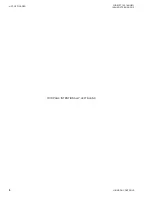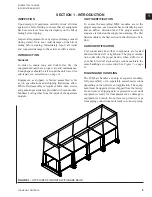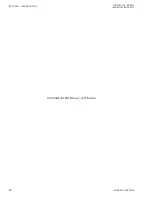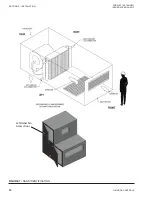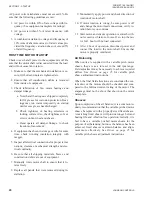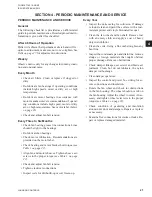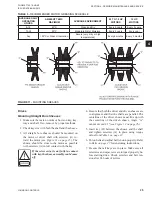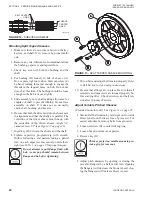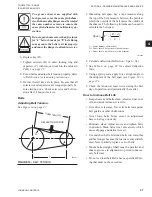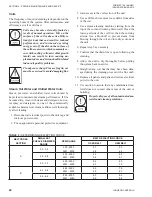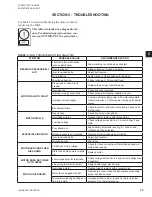
TABLE 1 -
MINIMUM HEX HEAD BOLT TORQUE IN
LB-FT - GRADE 5 BOLT
SIZE (INCHES*)
THREAD
DESIGNATION
MIN. TORQUE
¼-20
UNC
6
5/16-18
UNC
14
5/16-24
UNF
16
3/8-16
UNC
24
3/8-24
UNF
28
7/16-14
UNC
42
7/16-20
UNF
45
½-13
UNC
69
½-20
UNF
83
9/16-12
UNC
99
9/16-18
UNF
118
5/8-11
UNC
150
5/8-18
UNF
176
¾-10
UNC
254
¾-16
UNF
301
7/8-9
UNC
358
7/8-14
UNF
422
1-8
UNC
500
1-14
UNF
602
Drain Pan
Inspecting and Cleaning Drain Pans
If evidence of standing water or condensate overflow
exists, identify and remedy the cause immediately. (Re-
fer to the troubleshooting section for possible causes
and solutions.) If microbial growth (mold) in the drain
pan is observed, clean the pan immediately using the
following procedure:
1. Disconnect all electrical power to the unit, tag and
lock out power source.
2. Put on appropriate personal protective equipment.
3. Remove all standing water.
4. Use a scraper or other tools to remove any solid-
matter. Remove solid matter with a vacuum de-
vice that uses high efficiency particulate arres
-
tance (HEPA) filters with a minimum efficiency
of 99.97% at 0.3-micron particle size.
5. Thoroughly clean the contaminated area with
mild bleach and water solution or an EPA-ap-
proved sanitizer specifically designed for HVAC
use. Carefully follow the sanitizer manufacturer
instructions regarding the use and the disposal of
their product.
6. Immediately rinse the drain pan thoroughly with
fresh water to prevent potential corrosion from the
cleaning solution of the drain pan and drain line
components.
7. Allow the unit to dry thoroughly before putting
the system back into service.
8. Determine and correct the cause of the microbial
contamination.
9. Be careful that the contaminated material does not
contact other areas of the unit or building.
Properly dispose of all contaminated ma-
terials and cleaning solutions.
Important: Standing water in drain pans
can promote microbial growth (mold) that
may cause unpleasant odors and serious
health-related indoor air quality prob-
lems. If mold is found, it must be removed
immediately and that portion of the unit
properly cleaned and sanitized.
Air Filters
Catalog data tables provide filter size, type and quan-
tity.
Throwaway Filters
To replace throwaway filters, install new filters with
the directional arrows pointing in direction of airflow.
Fans
Inspecting and Cleaning Fans
Fan sections or air handlers should be inspected ev-
ery six months at a minimum or more frequently if
operating experience dictates. Accumulated dirt and
organic matter on the interior surfaces of fans should
be cleaned immediately. The suggested procedure for
cleaning these surfaces is:
1. Disconnect all electrical power to the unit, tag and
lock out power source.
2. Put on appropriate personal protective equipment.
JOHNSON CONTROLS
22
FORM ET102.19-NOM1
ISSUE DATE:08/26/2013
SECTION 4 - PERIODIC MANINTENANCE AND SERVICE

